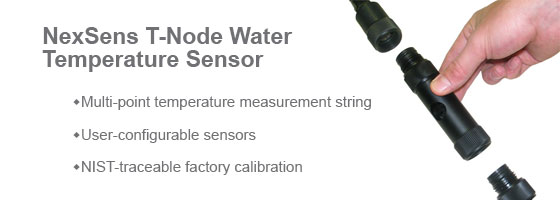NOAA buoys to utilize NexSens temperature strings

NexSens T-Node temperature strings will soon be added to National Oceanic and Atmospheric Administration monitoring buoys in Lake Erie along the coast of Cleveland, Ohio. The NOAA buoy system is part of a real-time Great Lakes network that is helping to create advanced ecosystem forecasting models for the region.
The real-time data, among many other benefits, forms an early warning system for coastal water pollution near Cleveland drinking plant intakes, thus ensuring the quality of tap water for the roughly 1.5 million residents of the city.
NOAA’s Real-time Environmental Coastal Observations Network project is a response to the critical need for a regional coastal observing system. The ReCon project aims to create a national network of low-cost coastal buoys capable of making water quality measurements throughout the water column. This whole-water-column data is transmitted using high-bandwidth wireless Ethernet communication networking standards. ReCon is benefiting a wide range of constituents by providing data to the public and educational institutions through a Web interface.
The NexSens temperature strings that will be utilized by the NOAA data buoys consist of connectorized digital smart sensor nodes, or T-Nodes. The T-Nodes are connected with underwater cabling to build a string of measurement sensors that are suspended vertically in the water column. (T-Nodes can also be strung horizontally along the seabed.)
The temperature strings allow for measurements throughout the water column instead of at a single point. Some information on surface temperature in the Great Lakes can already be gathered from satellite surface temperature maps and from other buoys with single-point temperature sensors, but they do not provide information on the critical thermal structure of the lake.
Each T-Node includes a completely sealed, extremely precise temperature measurement system with top and bottom waterproof connectors. The T-Nodes have a range of 0-50 ºC and an accuracy of +/-0.1 °C for high-precision measurements. T-Nodes can withstand underwater deployments as deep as 100 meters.





0 comments